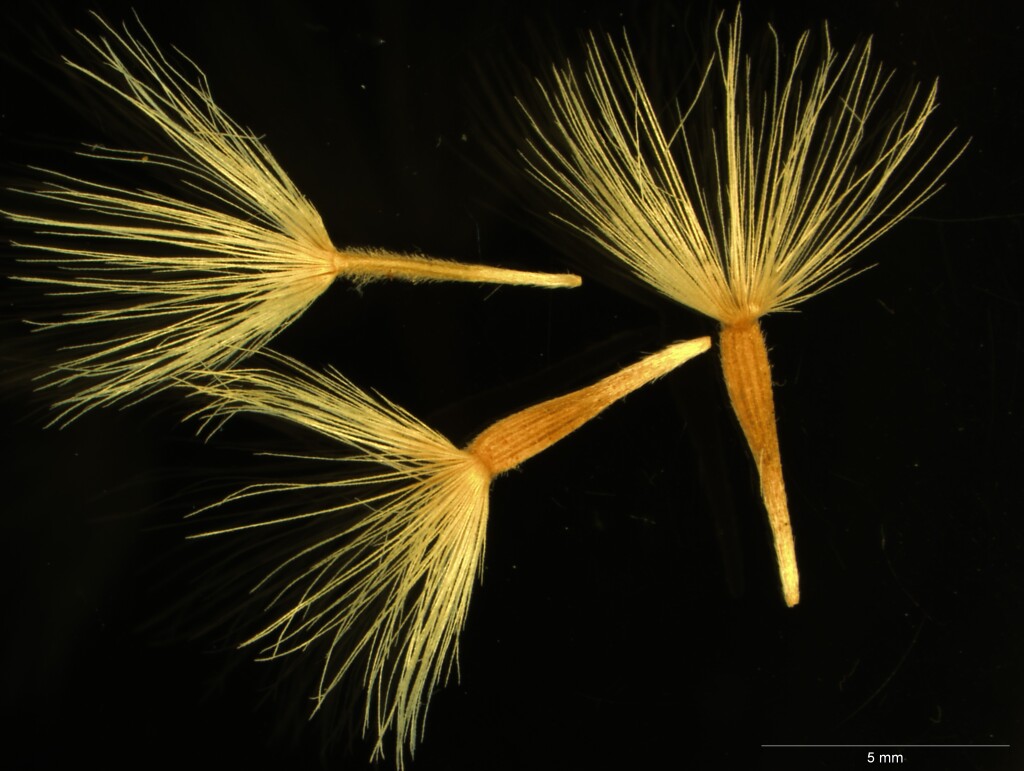Vittadinia gracilis
(Hook.f.) N.T.Burb. Woolly New Holland DaisyPerennial (rarely annual) herb or subshrub, 10–40 cm high, usually much-branched near base, sparingly branched above; stems and young leaves densely white-cottony, glands usually present but obscured. Leaves narrowly obovate to spathulate, 8–40 mm long, 2–8 mm wide, conduplicate or partly so, rarely quite flat, usually entire, sometimes with a pair of small teeth at the broadest part; apex obtuse, sometimes emarginate, often shortly recurved. Involucral bracts linear, the longest 6–8 mm long, cottony-pubescent, but not wholly obscuring surface with sessile glands; ray florets mauve, ligules 2–3 mm long. Cypsela narrowly cuneate, 4–7 mm long, flattened, marginal ribs hardly thickened, surfaces with entire or minutely bifid eglandular hairs (dense and appressed near base, spreading above), glands apparent at least in upper part; pappus bristles barbellate, the longest 5–8 mm long. Flowers mostly Oct.–Jan.
LoM, MuM, Wim, GleP, VVP, VRiv, MSB, RobP, MuF, GipP, OtP, Gold, CVU, GGr, DunT, NIS, EGU, HSF, HNF. Also WA, SA, NSW, ACT, Vic, Tas. Common in northern Victoria, usually occurring on loamier soils of the plains, less common in dune-mallee. Occasional south of the Great Dividing Range (e.g. volcanic plain just west of Melbourne, Heyfield area, limestone areas of the east near Bairnsdale and Ensay).
See also notes under V. cuneata var. morrisii.
Walsh, N.G. (1999). Vittadinia. In: Walsh, N.G.; Entwisle, T.J., Flora of Victoria Vol. 4, Cornaceae to Asteraceae, pp. 869–877. Inkata Press, Melbourne.
 Spinning
Spinning



